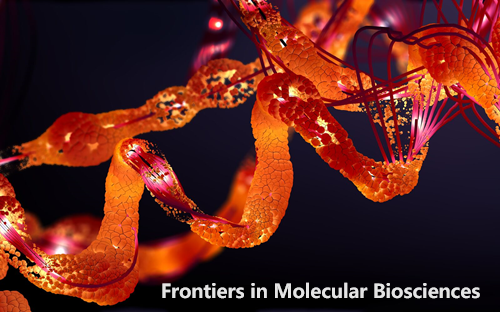无标记定量蛋白质组分析揭示了利拉鲁肽治疗后肥胖症患者血浆蛋白质表达的差异
IF 3.9
3区 生物学
Q2 BIOCHEMISTRY & MOLECULAR BIOLOGY
引用次数: 0
摘要
导言肥胖症的治疗和管理在临床上具有挑战性。将 GLP-1 受体激动剂(GLP1RA)纳入肥胖症的医疗管理已被证明是有效的。方法:对 20 名肥胖症患者(男/女:7/13)(平均体重指数为 40.65 ± 3.7 kg/m2)进行了一项单中心前瞻性研究,以评估利拉鲁肽 3 mg 治疗后血浆蛋白的变化。测量了人体测量和实验室参数,并在两个时间点采集了血液样本:开始治疗前的基线(治疗前组,PT)和接受全剂量利拉鲁肽 3 毫克治疗三个月后(治疗后组,PoT)。研究采用无靶标 LC MSMS 质谱方法,并结合生物信息学和网络通路分析来确定蛋白质组谱的变化。在 PT 组和 PoT 组之间,体重、体重指数和 HbA1c 水平的变化具有统计学意义(配对 t 检验,P < 0.001)。两组间 151 种蛋白质(31 种上调,120 种下调)的丰度出现了明显的失调。使用接收器操作特征曲线(ROC)对潜在的生物标志物进行了评估。与 PT 组相比,PoT 组的多聚蛋白-2、大核糖体 P2 和富脯氨酸蛋白 1 下调。通过巧妙通路分析(IPA)确定的顶级网络通路以MAPK、AKT和PKc信号通路失调为中心,与细胞间信号转导和相互作用、细胞组装和组织、细胞损伤有关,得分为46分,有25个重点蛋白。讨论通过无标记定量蛋白质组学分析,我们的研究揭示了利拉鲁肽3毫克治疗肥胖症患者后血浆蛋白的显著失调。PT组和PoT组之间蛋白质组学特征的变化表明,参与炎症和氧化应激途径的蛋白质水平有所下降。另一方面,参与糖酵解和脂肪酵解代谢途径的蛋白质以及参与细胞骨架和内皮重组的蛋白质则有所增加。通过从分子和蛋白质组水平了解利拉鲁肽的作用,可以全面了解利拉鲁肽是如何影响新陈代谢、诱导减肥和改善整体代谢健康的。本文章由计算机程序翻译,如有差异,请以英文原文为准。
Label-free quantitative proteomic profiling reveals differential plasma protein expression in patients with obesity after treatment with liraglutide
IntroductionTreatment and management of obesity is clinically challenging. The inclusion of GLP-1 receptor agonists (GLP1RA) in the medical management of obesity has proven to be efficacious. However, mechanisms underlying the molecular changes arising from GLP1RA treatment in patients with obesity remain to be elucidated.MethodsA single-center, prospective study was undertaken to evaluate the changes in the plasma proteins after liraglutide 3 mg therapy in twenty patients (M/F: 7/13) with obesity (mean BMI 40.65 ± 3.7 kg/m2 ). Anthropometric and laboratory parameters were measured, and blood samples were collected at two time points: baseline, before initiating treatment (pretreatment group, PT), and after three months of receiving the full dose liraglutide 3 mg (posttreatment group, PoT). An untargeted label-free LC MSMS mass spectrometric approach combined with bioinformatics and network pathway analysis was used to determine changes in the proteomic profiles.ResultsThe mean age of the study participants was 36.0 ± 11.1 years. A statistically significant change was observed in weight, BMI and HbA1c levels between the PT and PoT groups (paired t-test, P < 0.001). A significant dysregulation was noted in the abundances of 151 proteins (31 up and 120 downregulated) between the two groups. The potential biomarkers were evaluated using receiver operating characteristic (ROC) curves. The top ten proteins (area under the curve (AUC) of 0.999 (95% CI)) were identified as potential biomarkers between PT and PoT groups and included Cystatin-B, major vault protein, and plastin-3, which were upregulated, whereas multimerin-2, large ribosomal P2, and proline–rich acidic protein 1 were downregulated in the PoT group compared with the PT group. The top network pathway identified using ingenuity pathway analysis (IPA), centered around dysregulation of MAPK, AKT, and PKc signaling pathways and related to cell-to-cell signaling and interaction, cellular assembly and organization, cellular compromise and a score of 46 with 25 focus proteins.DiscussionThrough label-free quantitative proteomic analysis, our study revealed significant dysregulation of plasma proteins after liraglutide 3 mg treatment in patients with obesity. The alterations in the proteomic profile between the PT and PoT groups demonstrated a decrease in levels of proteins involved in inflammation and oxidative stress pathways. On the other hand proteins involved in the glycolytic and lipolytic metabolic pathways as well as those participating in cytoskeletal and endothelial reorganization were observed to be increased. Understanding actions of liraglutide at a molecular and proteomic levels provides a holistic look into how liraglutide impacts metabolism, induces weight loss and improves overall metabolic health.
求助全文
通过发布文献求助,成功后即可免费获取论文全文。
去求助
来源期刊

Frontiers in Molecular Biosciences
Biochemistry, Genetics and Molecular Biology-Biochemistry
CiteScore
7.20
自引率
4.00%
发文量
1361
审稿时长
14 weeks
期刊介绍:
Much of contemporary investigation in the life sciences is devoted to the molecular-scale understanding of the relationships between genes and the environment — in particular, dynamic alterations in the levels, modifications, and interactions of cellular effectors, including proteins. Frontiers in Molecular Biosciences offers an international publication platform for basic as well as applied research; we encourage contributions spanning both established and emerging areas of biology. To this end, the journal draws from empirical disciplines such as structural biology, enzymology, biochemistry, and biophysics, capitalizing as well on the technological advancements that have enabled metabolomics and proteomics measurements in massively parallel throughput, and the development of robust and innovative computational biology strategies. We also recognize influences from medicine and technology, welcoming studies in molecular genetics, molecular diagnostics and therapeutics, and nanotechnology.
Our ultimate objective is the comprehensive illustration of the molecular mechanisms regulating proteins, nucleic acids, carbohydrates, lipids, and small metabolites in organisms across all branches of life.
In addition to interesting new findings, techniques, and applications, Frontiers in Molecular Biosciences will consider new testable hypotheses to inspire different perspectives and stimulate scientific dialogue. The integration of in silico, in vitro, and in vivo approaches will benefit endeavors across all domains of the life sciences.
 求助内容:
求助内容: 应助结果提醒方式:
应助结果提醒方式:


